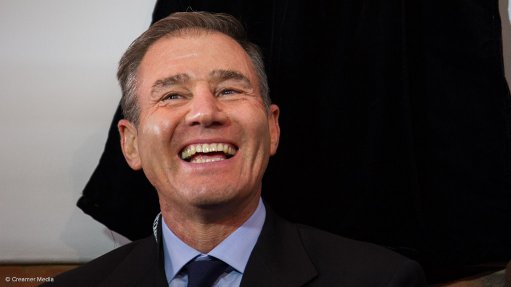
Glencore CEO Ivan Glasenberg
Photo by: Duane Daws
JOHANNESBURG (miningweekly.com) – Diversified natural resources company Glencore on Thursday reported production in line with its guidance for the 12 months ended December 31, on the back of copper, zinc, coal and oil production suspensions.
Copper production for the year under review fell 5% to 1.4-million tonnes, with higher grades and throughput within the South American portfolio offsetting the impact of the suspended production at Glencore’s African copper assets.
The company, headed up by CEO Ivan Glasenberg, posted a 24% year-on-year drop in zinc production to just under 1.1-million tonnes, owing to production curtailments, particularly in Australia and Peru.
A 20% hike was reported in nickel production to 115 100 t, while coal output contracted 5% to 124.9-million tonnes during the period under review.
Meanwhile, Glencore's entitlement oil interest of 7.5-million barrels was 29% lower than in 2015, owing to the depletion of existing fields.
The company’s output is in line with analysts expectations and largely in line with estimations.
The group’s 2017 production guidance remains unchanged, with copper output of 1.35-million tonnes expected, zinc production at 1.19-million tonnes, lead at 300 000 t, nickel at 120 000 t, ferrochrome at 1.65-million tonnes and coal at 135-million tonnes.
“Overall, we see the results as positive. We have seen, already, that the company is getting the job done on the financing and deleveraging side of the business; it is also delivering on the operational side. The mining business appears strong enough now to support the restructuring of the business, which is near completion in our opinion,” UK-based firm Bernstein said.
UBS had a buy rating on Glencore, stating that it believed its valuation was attractive, it offered leverage to commodities which have the most attractive fundamentals, such as copper and zinc, and it should deliver material volume growth from latent capacity.